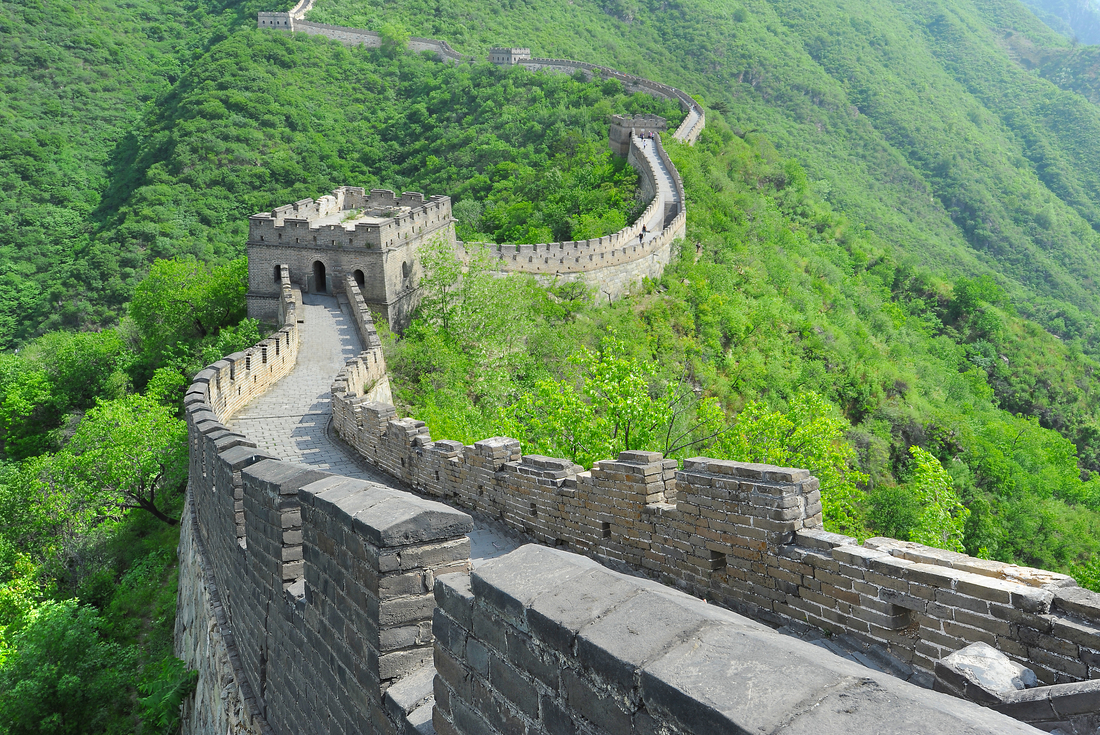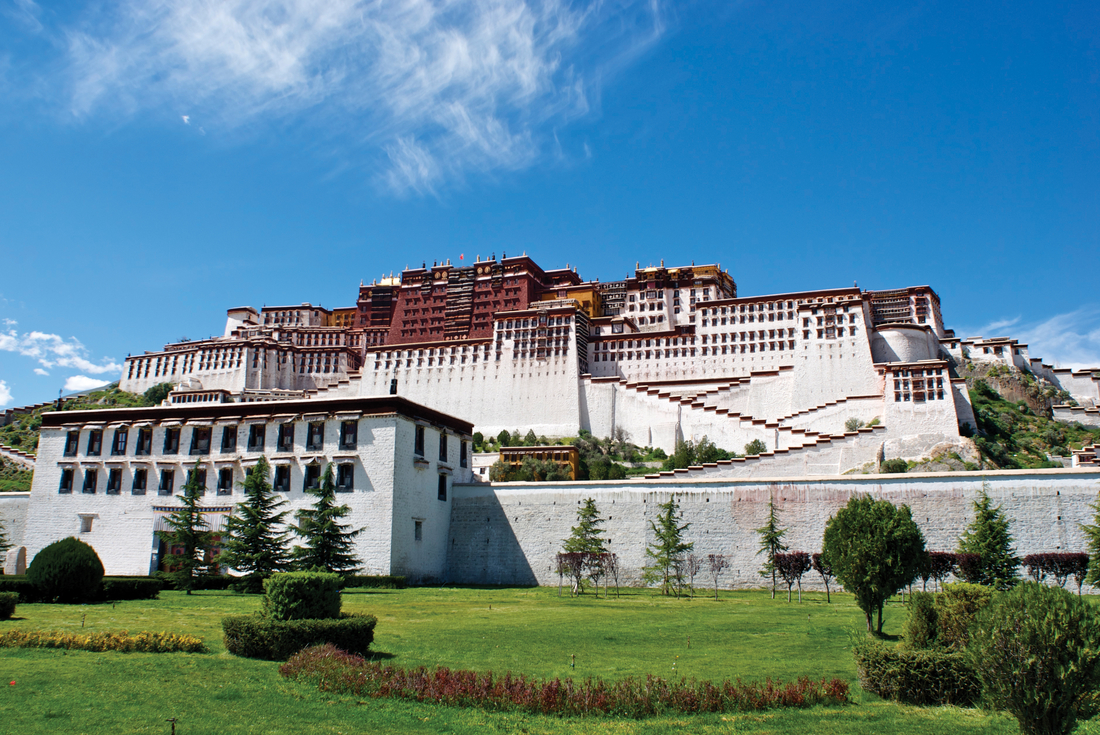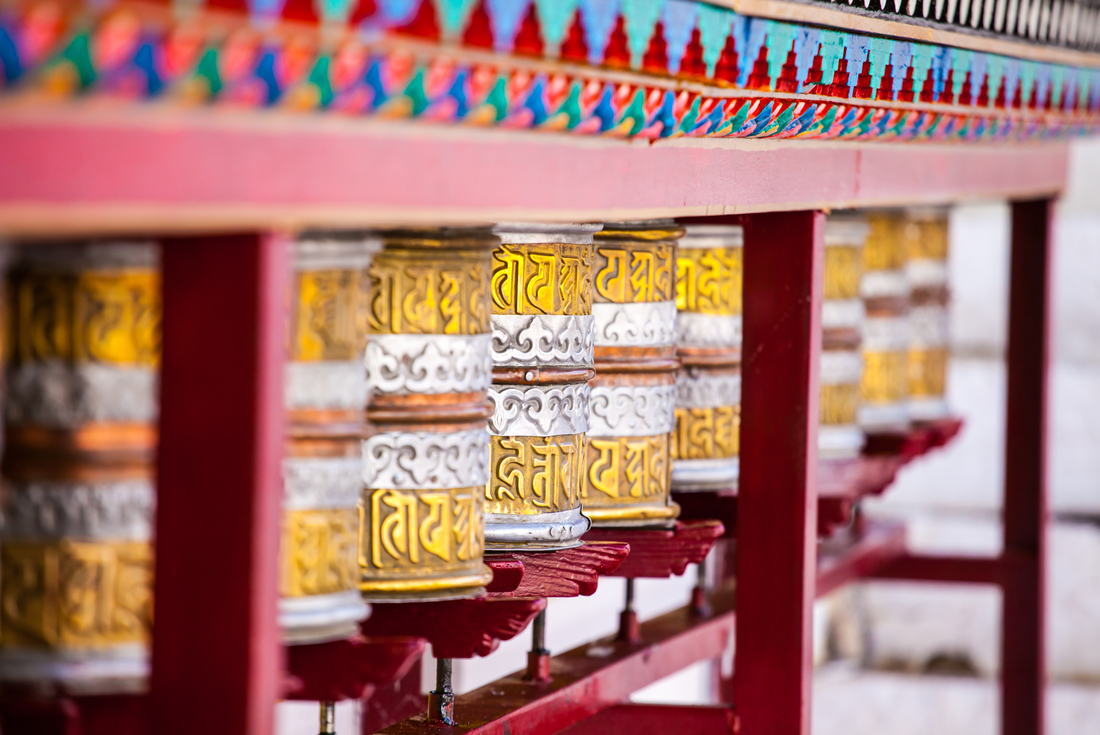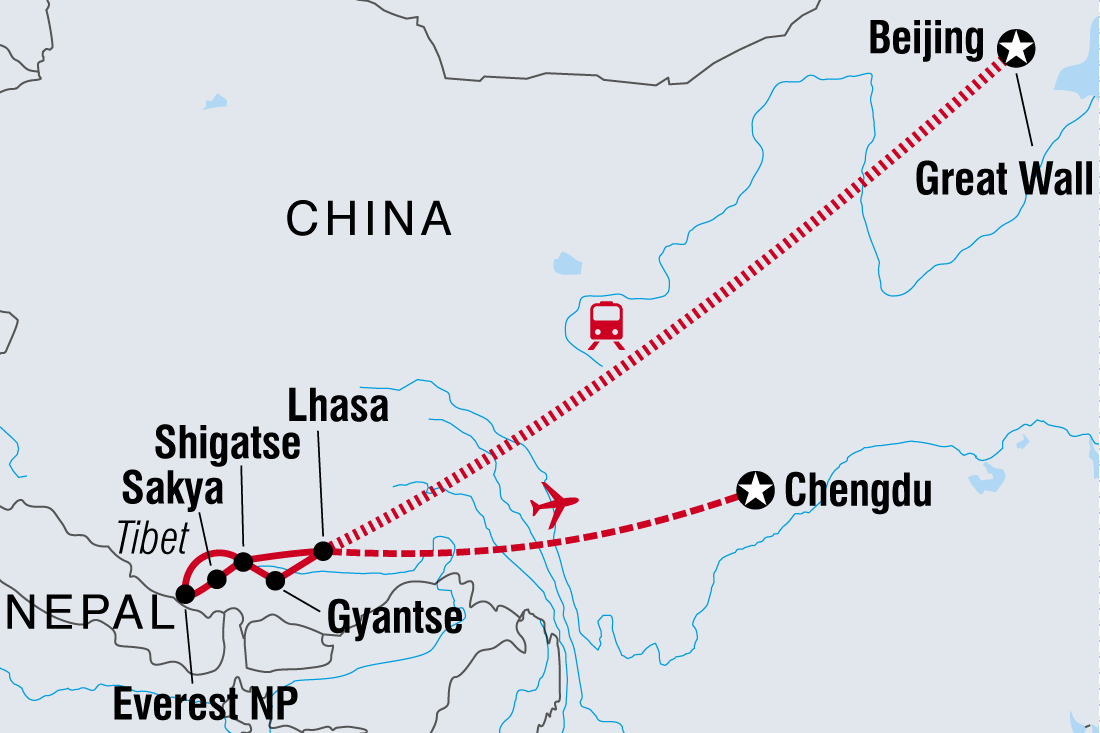Product Description
Highlights
Experience one of the world’s greatest train journeys – the railway to the roof of the world, crossing incredibly mountainous and remote terrain. Like everything it does, China’s ancient history is on an epic scale – see it first-hand with hours to explore the Great Wall. Get to know Lhasa, from the architectural wonder of the former home of the Dalai Lama to the incredible atmosphere of the pilgrim-filled Jokhang Temple, the holiest in the Tibetan Buddhist world. Every drive in Tibet seems more stunning that the last. Climb phenomenal passes, twist up thrilling peaks, and take in incredible views of skies and lakes, where the only way to tell their perfect blue apart is the towering mountains that separate them
Overview
It could be a combination of the mist rolling off the chilly peaks or the light breaching between the mountains, but there’s something that makes Tibet feel as if it’s caught in a hazy dream. In between the capital of China and the vast Tibetan Plateau, tiny, ornate villages share the Tibetan people’s inspiring sense of hope. Along the world’s highest railway en route to Lhasa, spirituality permeates through its remote monasteries, high mountain passes, homes and marketplaces. Delve into monastic rituals and marvel at the monolithic Mt Everest on this extraordinary journey.
ALTERNATE ITINERARY & CONTINGENCY FUND:
There have been recent cases where the Chinese Railway Bureau has not permitted foreign groups to travel from Beijing to Lhasa by train without any prior notice or specific reason. Please ensure you have access to your contingency fund of USD$500 in cash should your group be affected and needs to fly from Beijing to Lhasa. Please see Day 1 of your itinerary for details.
2020 changes:
This trip will be discontinued as we resume the overland journey from Beijing to Kathmandu in 2020. Please check our Tibet:Beijing to Kathmandu Overland (CBST) trip if you are interested.
Beijing
Nimen Hao! Welcome to Beijing, the capital of the most populous country on earth with plenty of places that give an insight into the nation's ancient past. Your adventure begins with a welcome meeting at 6 pm, where your insurance and next of kin details will be collected. Please look for a note in the hotel lobby or ask the hotel reception where the meeting will take place. Any free time today in Beijing is at your leisure, so you can start your explorations of this vast city.
Great Wall - Train to the Roof of the World
No trip to China would be complete without a visit to the Great Wall. Today you’ll take an early morning visit to one of the best-preserved areas featuring guard towers dating back to the Ming dynasty - , the Mutianyu section (approximately 2 hours). An incredible piece of engineering, the wall stretches 6000 km westwards from the mountain ridges north of Beijing. It was originally constructed to protect Chinese empires from the 'barbarians' of the north and even though it failed in this purpose, it is still without a doubt one of the country's most remarkable achievements. It's a 30-minute climb up some steep steps to the wall itself, but it’s well worth the effort. You will need good walking shoes for this. There’s also the option of taking a chair lift or cable car to the top and back if you’re after a more leisurely experience. Head back into the city in the afternoon, then this evening transfer to the Beijing West railway station (one of the biggest and busiest in the world!) to board the train to Lhasa (approximately 45 hours). This first night you'll pass through provincial towns, through Xi'an, and then directly into the mountains, sometimes through tunnels that can last for minutes at a time!
About overnight train in China:
We use hard sleeper class trains for most of our overnight train journeys. These are not as rough as they sound – compartments are open-plan, clean, with padded three-tiered berths (6 to a compartment). The Beijing-Lhasa train is one of the newest and best in China. Wherever possible, we will group our travellers together, but this will depend on group size and ticket availability. Sheets, pillows and a blanket are provided. We recommend bringing your own sleeping sheet as the quality/cleanliness of sheets may not be what you are used to. Safe, hot drinking water is always available. It is a good idea to bring a mug, spoon, knife and fork if you will be preparing your own hot drinks or food on the train (as these are not provided in cabins). The train has a dining car; meals are of better quality on the first day, as by the second day you are travelling at altitude, which makes cooking difficult! You may wish to purchase extra snacks of your choice before the journey to supplement food available on the train. Basic bathroom facilities with toilets and washbasins are situated at the end of each carriage. As toilet paper isn't always available, it's best to bring an emergency supply. It's usually impossible to upgrade to a different class while on the train, so it shouldn't be replied upon as an option.
Train to the Roof of the World
The train to Lhasa is one of China's greatest recent engineering feats. It’s the highest railway in the world, traversing some incredibly mountainous and remote terrain. The journey takes you through the major cities of Xi'an, Lanzhou and Xining, and across the Qinghai Plateau before arriving in Lhasa. Luxuriate in the feeling of accomplishment without having to do anything – go to bed and wake up 1000 kilometres away. Stop briefly in Lanzhou, the crossroads of journeys along the Silk Road and the Tibet-Qinghai plateau, and head on past the immense city of Xining. On this second night you’ll climb in altitude and your breath with likely be taken away by the landscape outside the windows – snow-dappled black cliffs and mountain peaks illuminated by the moonlight.
Lhasa
The train will travel through a wide brown grassland complemented by terracotta foothills, with a speckling of grazing yaks, sheep and goats and the occasional punctuation of lakes and streams. This same landscape, only sparsely populated by clusters of brick village houses, treeless and vast, will accompany you nearly all the way to Lhasa, where you’ll arrive some time after lunch. The colourful and historic holy city of Lhasa is situated in a small valley, and for hundreds of years it was a mysterious place, virtually unknown to the outside world. Even the most adventurous and hardy of explorers rarely reached the city without being turned away, either by the treacherous terrain or the fierce warrior monks that protected Tibetan territory from intruders. While now welcoming tourists and much modernized, Lhasa remains an intriguing city with a deeply fascinating culture, sights and stories. Check in to your hotel and begin to get acclimatised with a free night tonight.
Lhasa
Begin exploring Lhasa with an easy morning walk in the nearby area before joining a momo (Tibetan dumpling) making class for lunch. In the afternoon, take a visit to the Sera Monastery and witness the residing monks taking part in heated debates in the courtyards.
Lhasa
Begin seeing the sights of 'The Place of the Gods' with visits to both the imposing Potala Palace and Jokhang temple. As the former home of the Dalai Lamas, Potala Palace sits 130 metres (426 feet) above the city. The palace is divided into two parts – the secular White Palace, used for offices and the like and the religious Red Palace that boasts a number of shrines, chapels and tombs of Dalai Lamas. Although the palace cannot be explored freely and a strict viewing schedule has to be adhered to, this in no way hampers the impact of an adventure to one of the world's architectural marvels. The charming gold and jewel-filled rooms and views from the roof are usually bustling with Tibetan pilgrims and Chinese tourists making offerings at the altars, adding to the spiritual and cultural intrigue on your visit here. For the rest of the day, you can deepen your perspective of Lhasa's holy sites with a trip to the Ganden or Drepung Monasteries. Alternatively, perhaps visit the Norbulingka, the Summer Palace of Dalai Lamas. Your leader will help arrange activities for your free time.
Gyantse
Today’s drive to Gyantse is spectacular, offering unforgettable views around every bend. Cross over several stunning passes as you twist through dramatic mountains and peaks that tower over the road. Take in the incredible views of Yamdrok Lake, mystically mirroring the sky above in near perfection, climb Khamba La Pass and see yaks plodding along the mountainside. Pass sheep herder villages scattered along the banks of the lake and be confronted by the soaring Noijin Kangsang, the peak of the Lhagoi Kangri mountain range. Stop at the town of Nangartse for lunch before climbing up to the Karo La pass, and then descending down to the town of Gyantse. The drive should take around 8 hours. The small rural town of Gyantse is famed for its wool carpets. While there’s still a feel of tradition and life continuing much as it has for centuries, Gyantse is also a great place to see contemporary Tibetan life in the backstreets, where pilgrims, pop music, cows, 'cowboys' on motorbikes, kids and monks all mingle in a lively mix of cultures. There are a number of interesting buildings in the town, including the Pelkhor Chode Temple complex, a unique structure built in 1414 that brought together 15 monasteries and three different orders of Tibetan Buddhism.
Gyantse - Shigatse
This morning you’ll spend time in the unique Gyantse Kumbum, an impressive layered stupa designed as a kind of 3D mandala (symbol that represents the universe) before exploring a model of the Buddhist universe where each storey represents a step to enlightenment. If you have a head for heights, you can wind your way up the pilgrim circuit. Pass dozens of tiny painting-filled chapels and press on as the passages steadily get narrower as you get higher –the air becoming more and more intoxicating with incense and smoke from yak butter lamps. Later on, there’s the chance to enjoy a lunch at a local family home, offering a fantastic real life experience where you can help prepare the food while enjoying both Tibetan hospitality and interesting tales. You will then drive to Tibet's second-largest city, Shigatse, on a 90-kilometre (55 mile) drive that takes at least 2 hours. Translating to ‘all fortune and happiness gathered here’, Shigatse is a busy, mountain-clasped city that’s rapidly modernising. There are still strong reminders of Tibetan culture, such as the Tashilhunpo Monastery which you’ll visit later on this adventure. Perhaps ask your leader for directions to the tranquil Chapel of Jampa and meditate on the world’s largest gilded statue. The courtyard outside of the Kelsang Chapel meanwhile, is one of the best places to observe the pilgrims and monks preparing for ceremonies.
Sakya
Continue west to the town of Sakya (approximately 3-4 hours). Sakya's monastery and town buildings are quite unique. Originally, there were two monasteries in Sakya – the Northern and the Southern – but the former was completely destroyed during the Cultural Revolution. The Southern Monastery is built in a medieval 'Mongolian' style, and rather than being whitewashed, the secular buildings are painted in red and while stripes. With its high imposing walls, the monastery is sometimes nicknamed the ‘Great Wall of Tibet’. You’ll have time to explore inside the Sakya monastery. At first the halls may seem similar to other monasteries you’ve visited, but after spending time here and soaking in the atmosphere you'll soon realise that Sakya has a subtle ancient beauty that’s like no other. After the monastery tour, you can choose to climb the hill through the Tibetan Village to see what's left of the original Northern Monastery complex. Make sure you pick your way through the ruins and remaining buildings in a clockwise direction as this is a kora route (a circumambulation around a sacred site). You can also hike a little further to visit the friendly nuns at the Nunnery high on the hill overlooking the town. Tonight for dinner, consider tasting some spicy food at one of the little restaurants run by Sichuanese immigrants.
Everest National Park
With an early start today, travel to Everest National Park, (approximately 5-6 hours). Cross the spectacular 5,050 metre Pangla Pass on the way to Rongphu Monastery, the highest monastery in the world. On a clear day, you’ll have giddy views of the Everest range. On a clear day you may even get a photo of the monastery's chorten against the backdrop of mighty Everest, or Qomolangma as it is called in Tibetan.
Leave your big luggage on our bus and take an overnight pack with you on the site shuttle bus that'll take you to Rongbuk Monastery and the tent city tonight.
A relatively modern monastery by Tibetan standards, Rongphu was built in the early 1900s and originally housed more than 500 monks. Today around 50 monks and nuns remain. They unusually share the same prayer hall, although they have separate residences. Enjoy a warm welcome from the monks and nuns here. Then either choose to relax at your campsite or to walk to the Everest Base Camp Monument stone that's about 500 meters away.
In the summer months, you stay near Rongphu in the Tent City that lies along the road to Everest Base Camp. Here nomad-style tents accommodate up to seven people with basic mattresses and bedding provided, but a sleep sheet and warm clothes for cool evenings are recommended. There are basic pit toilets nearby. A yak dung stove in the central open area of each tent provides heat. Being so close to the tallest mountains in the world more than makes up for the basic sleeping conditions. In colder months when the Tent City is not operational, you’ll stay in the monastery guesthouse or in a nearby town. Rooms here are quad-share with very simple, shared facilities.
Shigatse
Return to Shigatse (approximately 7-8 hours), which will feel like a bustling metropolis after the remote scenery from the last few days. Today will be a long day of travelling, but the constantly incredible scenery will make the journey worthwhile. There will be plenty of stops along the way for photo opportunities and to stretch the legs.
Shigatse - Lhasa
Before embarking on a return trip to Lhasa, visit the Tashilhunpo Monastery, one of the few in Tibet to have come out of the Cultural Revolution virtually unscathed. Sheltering expansive territory inside its thick stone walls, it’s almost like a town in itself – you’ll get the opportunity to explore the area further on a guided walk. Perhaps join the pilgrims on their kora (prayer circuit), spinning prayer wheels on a 1-hour walk around the perimeter of the monastery while taking in splendid, atmospheric views. Travel back on the same jaw-dropping road that you took a few days ago, allowing you to experience the incredible scenery of Yamdrok Lake and the Khamaba La Pass from every angle. There’ll be stops along the way for snacks and a few final photos of the mountains. When you return to Lhasa, the rest of the day is free. Perhaps follow the pilgrim path around the Potala Palace or take photos of the busy scene from the main square. Spend your last Tibetan night here in Lhasa.









